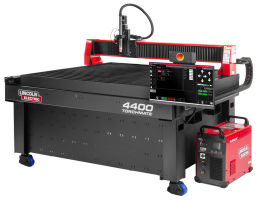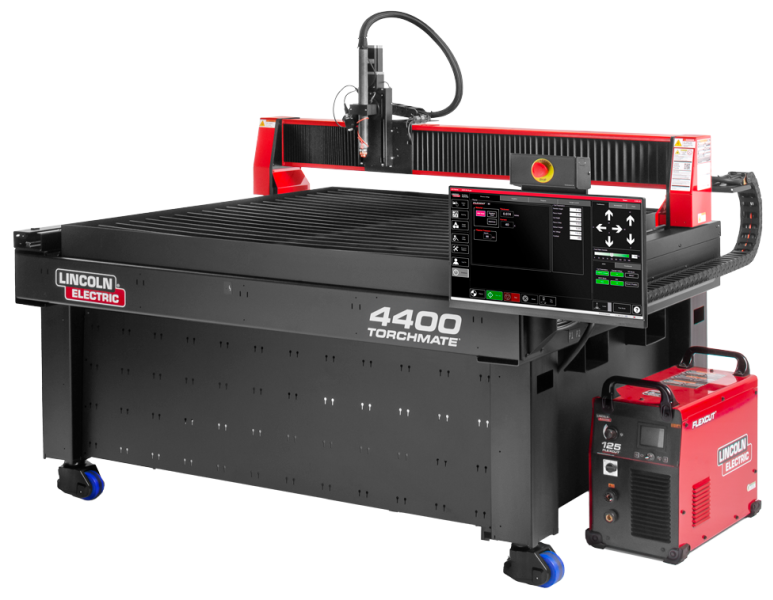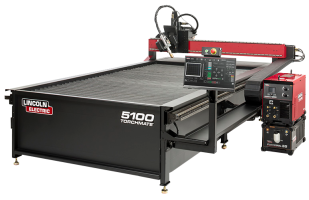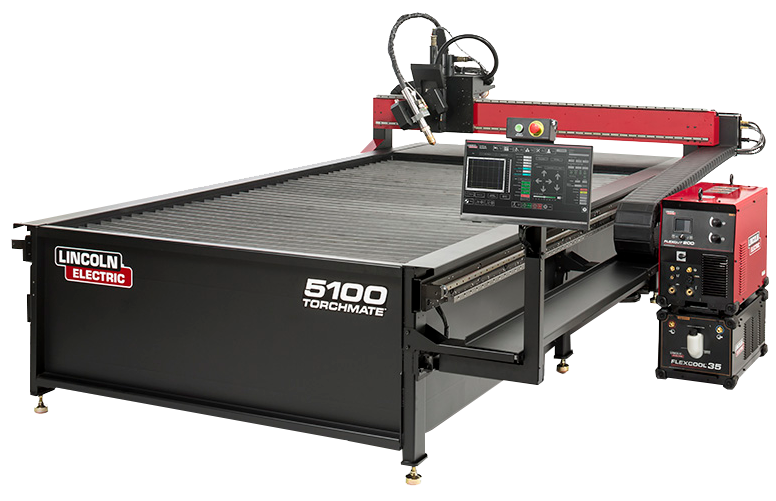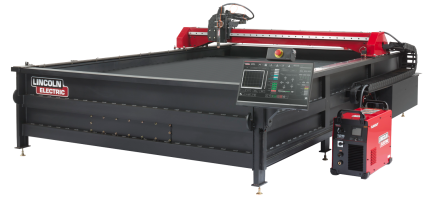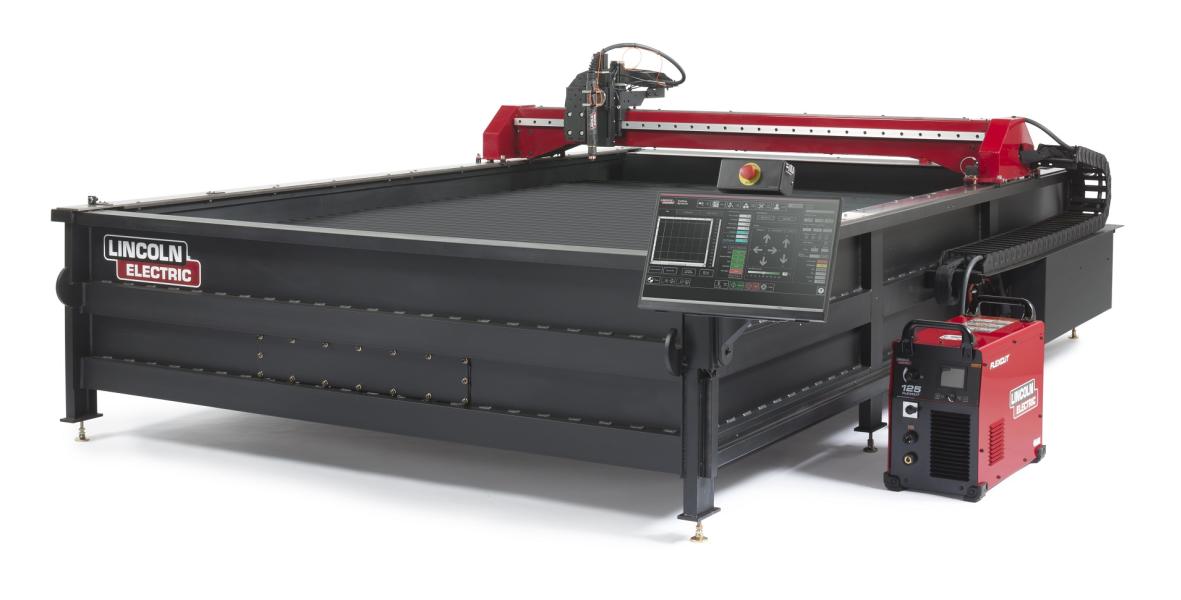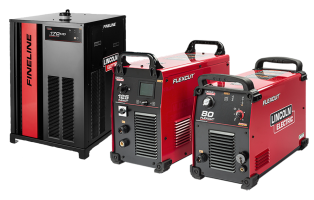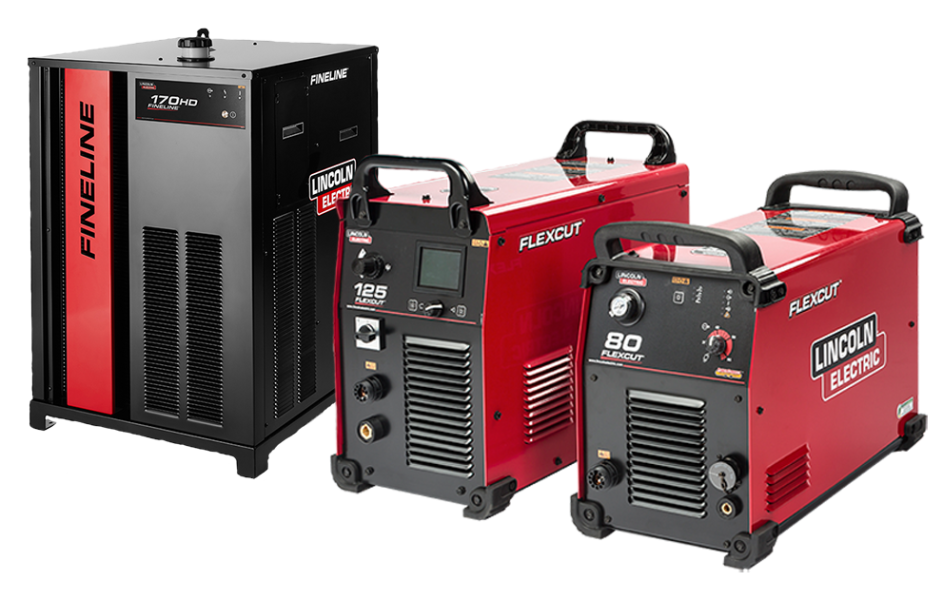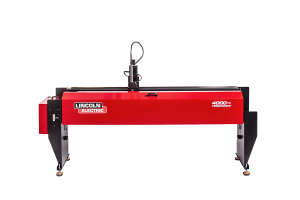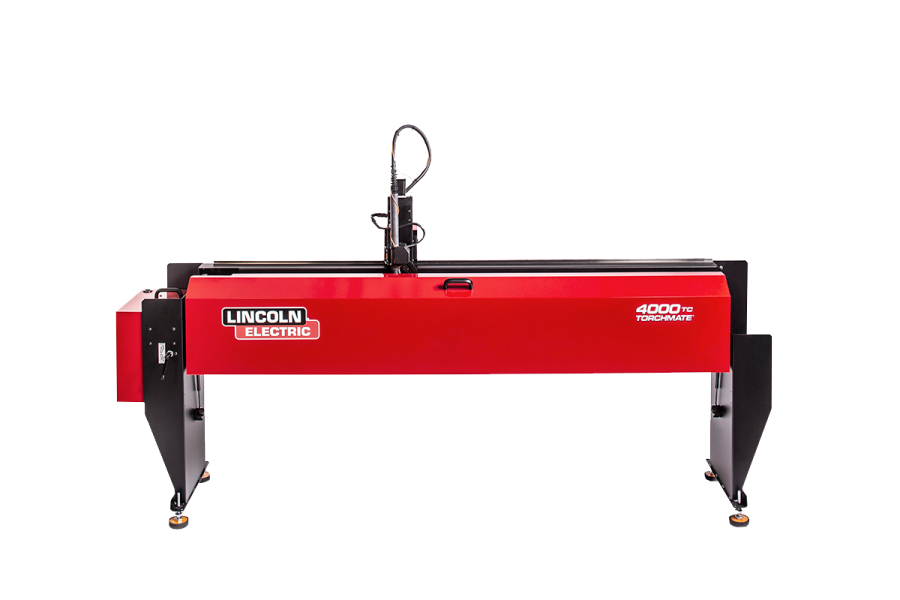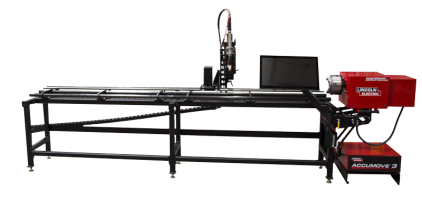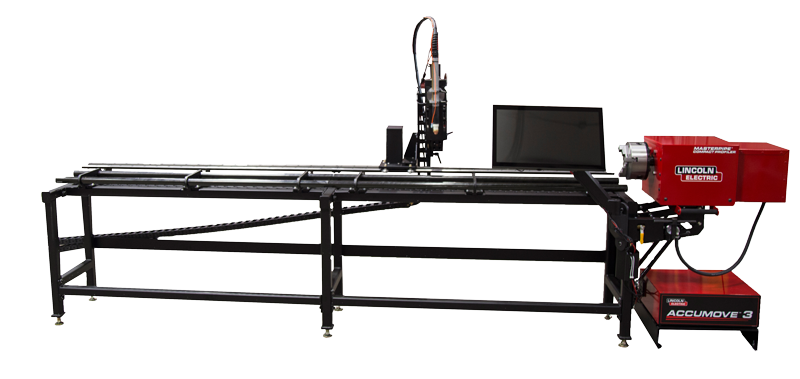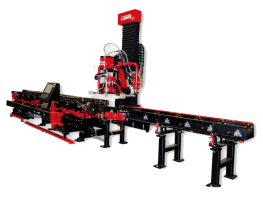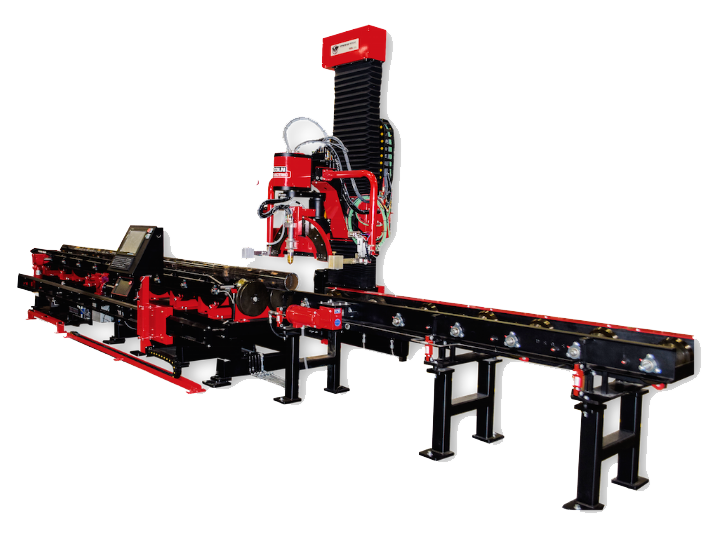The Inherent Accuracy of Plasma ARC
Plasma arc is a marvelous process, allowing you to cut non-ferrous metals as well as mild steel. However it does have some limitations. We believe that you should be aware of what is and what is not possible using plasma, regardless of whose CNC machine you purchase. Plasma will produce good results for perhaps 95% of the applications out there, but you're not going to cut watch parts with it.
Plasma produces a cut edge that is as smooth as laser, but it is handicapped by a slight (4 to 5 degree) bevel in the cut face. The bevel is caused by the swirling action of the air in which the cutting arc travels when it exits the torch. The thicker the material, the more pronounced the bevel is, because it has further to travel. It isn't particularly noticeable in material 1/8" or thinner. The bevel is most noticeable when cutting 3/8" or smaller holes in 1/4" or thicker material.
Generally, the top surface edges of a shape cut with plasma will be slightly better than the bottom. This difference increases with the thickness of the material.
Another limitation is the warping effect of the 5,000 degree plasma arc on thin material, particularly aluminum. A fully automatic torch height control is necessary to react to material that is bowing and moving while being cut. It is best to use a fast cutting speed, and not spend much time in a single spot. If necessary, come back to finish up an area after it has cooled a bit. The slower a material conducts heat, the better a job plasma will do on it. Stainless steel cuts the best, and brass the worst.
A final limitation is the gap (approximately .040" to .080" depending on nozzle) produced as the torch slices a channel out of the material. Here is an illustration:
 Using a spring-loaded ball point pen mounted on our Z axis equipped Torchmate 2, we have drawn the Harley logo perfectly as small as 1 1/2" long on paper . In this photo it has all the lead-ins and lead-outs intact. Detail doesn't get any better than that.
Using a spring-loaded ball point pen mounted on our Z axis equipped Torchmate 2, we have drawn the Harley logo perfectly as small as 1 1/2" long on paper . In this photo it has all the lead-ins and lead-outs intact. Detail doesn't get any better than that.
However, with a plasma cutter producing a 1/16" gap, or kerf, at 55 amps in 1/4" steel, the letters start to fall off if the piece is made less than about a foot long. We could probably reduce the shape size to 8" or so in 1/8" steel with a 40 amp nozzle. Making the legs on the letters wider would also help.
The plasma arc process itself is the limiting factor in how much detail you can cut. Any manufacturer who claims that their machine will produce better detail than other machines is either being misleading, or is on the sales side, with no plasma cutting experience. Any properly constructed CNC shape cutting machine is mechanically more accurate than the plasma process it is controlling
Don't put too much stock in the neatly laid out and painted shapes you may have seen on some web sites. They are always in very thin material, photographed from an angle where you can't see the bevel, or too far away to see well. Some are, frankly, difficult to believe. We will give you our honest opinion as to the suitability of plasma for your application.
The machine upon which the Harley Davidson logo is resting is a prototype of an extruded aluminum Standard Torchmate constructed of lighter materials than the Torchmate 2.



